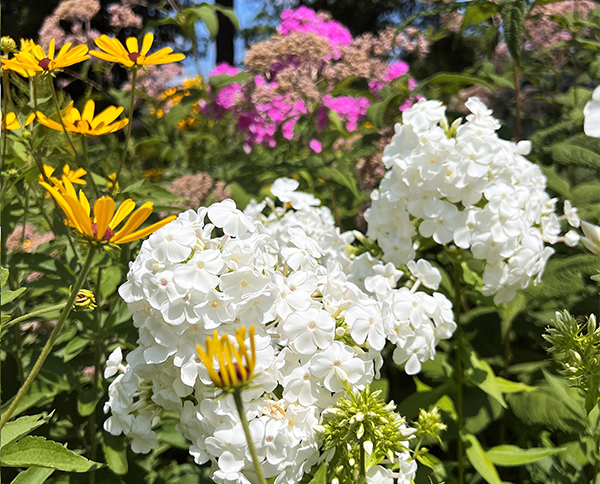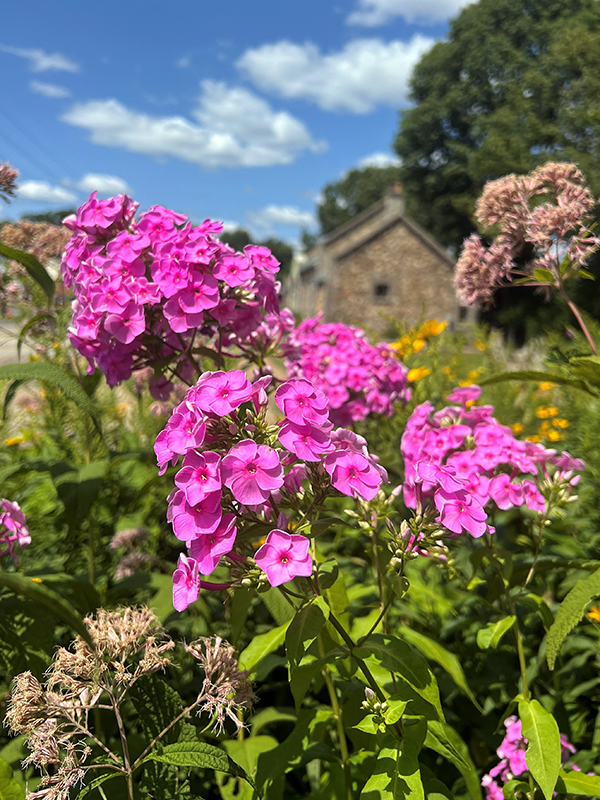
July 25, 2024| Education, Environment
By: Holly Odgers
The hot, sunny weather these past few weeks has our native gardens bursting with vibrant colors and lots of activity from bees, butterflies, and other pollinators. This week we’re spotlighting three standout species currently in bloom: shrubby St. John's wort, garden phlox, and mountain mint.
 |
 |
 |
| Shrubby St. John's Wort | Garden Phlox | Narrow-Leaved Mountain Mint |
Shrubby St. John's wort (Hypericum prolificum) is a deciduous shrub with bright yellow flowers with prominent stamens that create a sunburst effect, attracting pollinators and providing a nectar source for bees and butterflies. Additionally, shrubby St. John's wort serves as a host plant for the caterpillars of gray hairstreak butterflies. It is deer resistant and can grow to 5 feet tall and thrives in full sun to part shade. Native Americans used St. John's wort to create poultices for treating wounds and sores, and as a remedy for depression and anxiety.
Garden phlox (Phlox paniculata), also known as summer phlox, has deep green foliage and conical clusters of fragrant flowers. We have both white and pink phlox blooming in our gardens. These showy flowers attract a variety of pollinators, including bees, butterflies, and hummingbirds. Garden phlox grows to a height of 2 to 4 feet and thrives in full sun to partial shade.
Narrow-leaved mountain mint (Pycnanthemum tenuifolium) is a perennial herb that features clusters of small, delicate white to pale purple flowers, which are a magnet for pollinators, including bees, butterflies, and other beneficial insects. Its long blooming period ensures a consistent food source for these vital pollinators throughout the summer months. Native Americans used mountain mint to treat headaches, fevers, and digestive issues. Growing up to 3 feet tall, narrow-leaved mountain mint thrives in sun to partial shade and is notably deer resistant.
We invite you to visit our native plant gardens at 125 Landing Road, Landing, NJ, to see these buzzworthy blooms firsthand. We hope you will be inspired to incorporate native plants into your yard or garden, supporting local wildlife and contributing to a healthier environment!

August 15, 2024
Education, Environment

August 26, 2024
Education, Environment